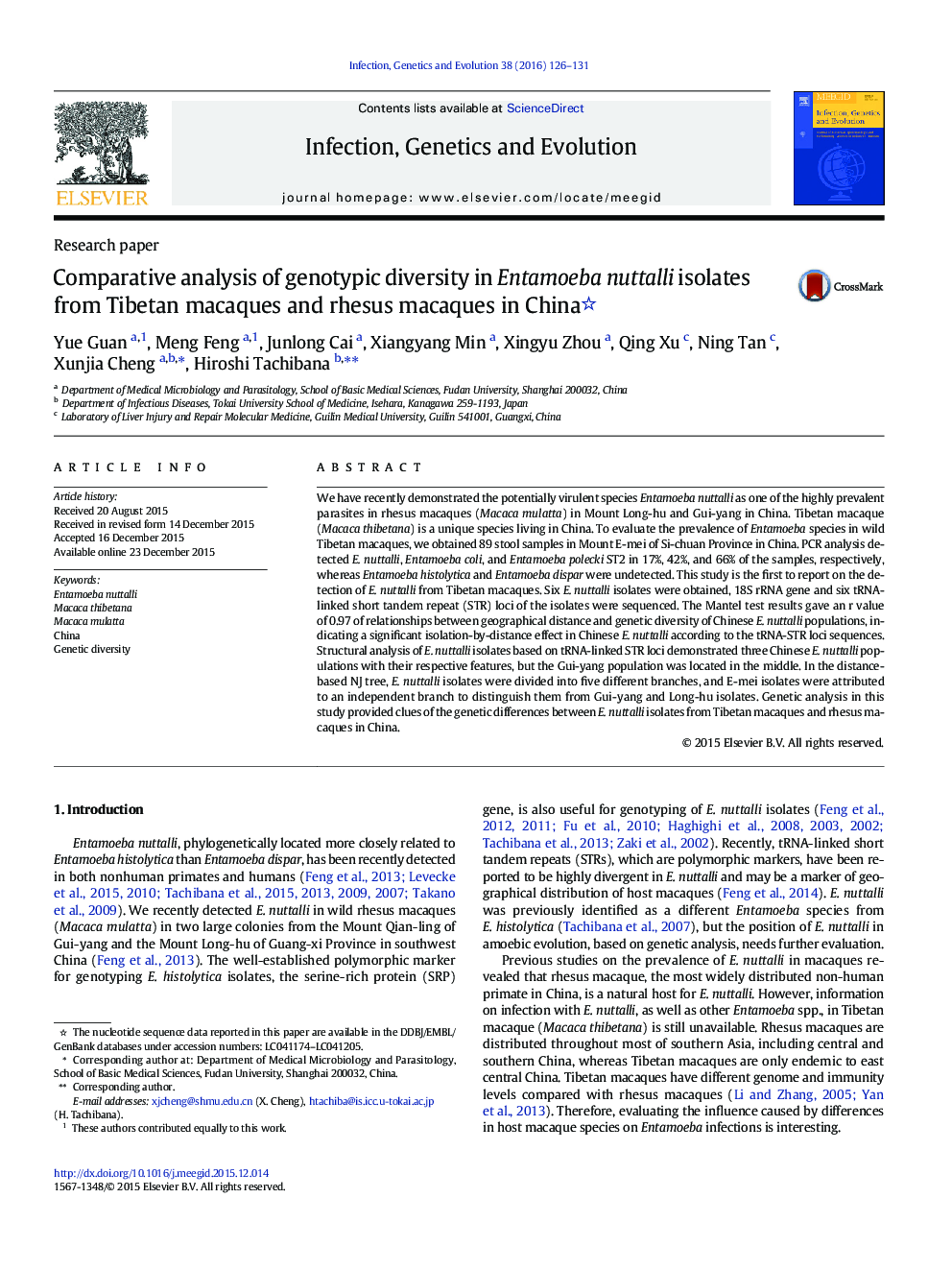| Article ID | Journal | Published Year | Pages | File Type |
|---|---|---|---|---|
| 5908491 | Infection, Genetics and Evolution | 2016 | 6 Pages |
â¢Collection of 89 stool samples from Tibetan macaque in Mount E-mei in Chinaâ¢The first to report the detection of Entamoeba nuttalli from Tibetan macaques.â¢Polymorphisms of tRNA-STR loci existed among Chinese E. nuttalli isolates.â¢EM isolates were attributed to an independent branch from GY and LH isolates.â¢Analysis indicated an isolation-by-distance effect in Chinese E. nuttalli isolates.
We have recently demonstrated the potentially virulent species Entamoeba nuttalli as one of the highly prevalent parasites in rhesus macaques (Macaca mulatta) in Mount Long-hu and Gui-yang in China. Tibetan macaque (Macaca thibetana) is a unique species living in China. To evaluate the prevalence of Entamoeba species in wild Tibetan macaques, we obtained 89 stool samples in Mount E-mei of Si-chuan Province in China. PCR analysis detected E. nuttalli, Entamoeba coli, and Entamoeba polecki ST2 in 17%, 42%, and 66% of the samples, respectively, whereas Entamoeba histolytica and Entamoeba dispar were undetected. This study is the first to report on the detection of E. nuttalli from Tibetan macaques. Six E. nuttalli isolates were obtained, 18S rRNA gene and six tRNA-linked short tandem repeat (STR) loci of the isolates were sequenced. The Mantel test results gave an r value of 0.97 of relationships between geographical distance and genetic diversity of Chinese E. nuttalli populations, indicating a significant isolation-by-distance effect in Chinese E. nuttalli according to the tRNA-STR loci sequences. Structural analysis of E. nuttalli isolates based on tRNA-linked STR loci demonstrated three Chinese E. nuttalli populations with their respective features, but the Gui-yang population was located in the middle. In the distance-based NJ tree, E. nuttalli isolates were divided into five different branches, and E-mei isolates were attributed to an independent branch to distinguish them from Gui-yang and Long-hu isolates. Genetic analysis in this study provided clues of the genetic differences between E. nuttalli isolates from Tibetan macaques and rhesus macaques in China.
